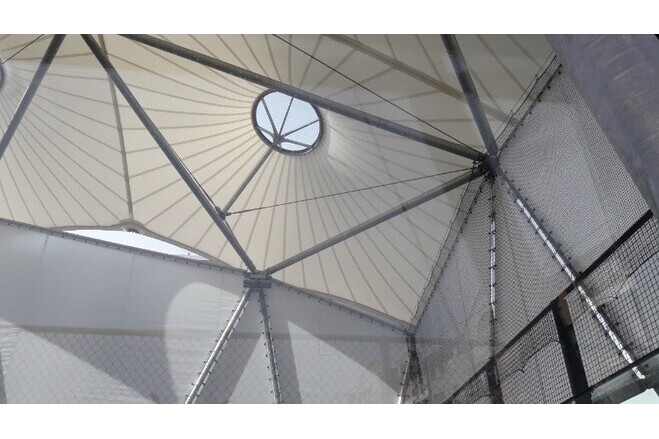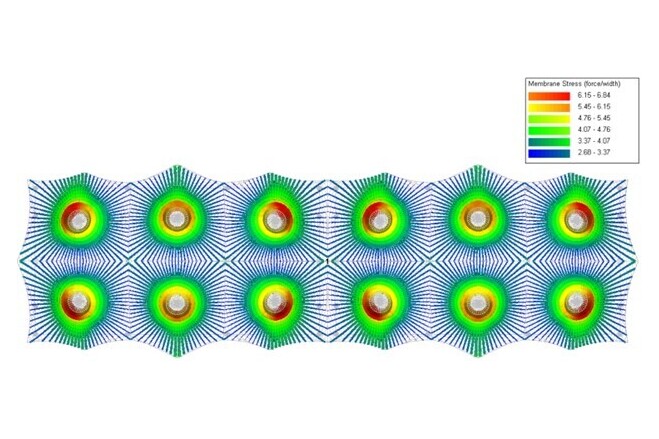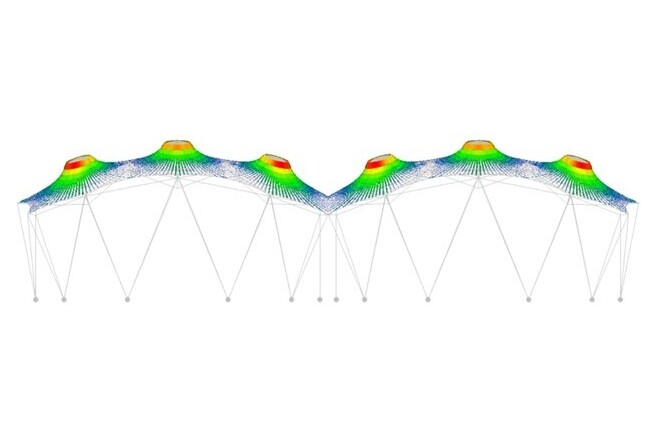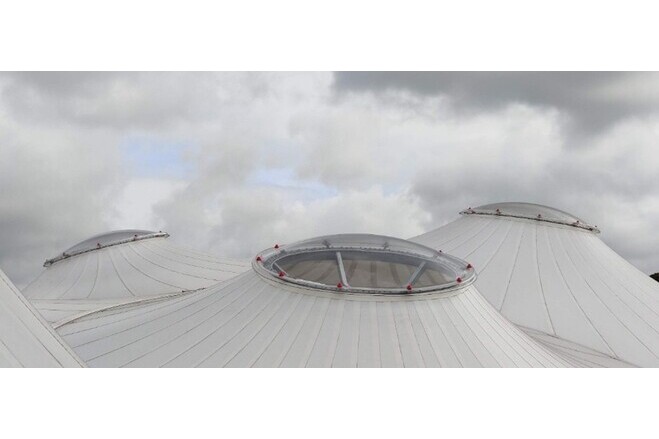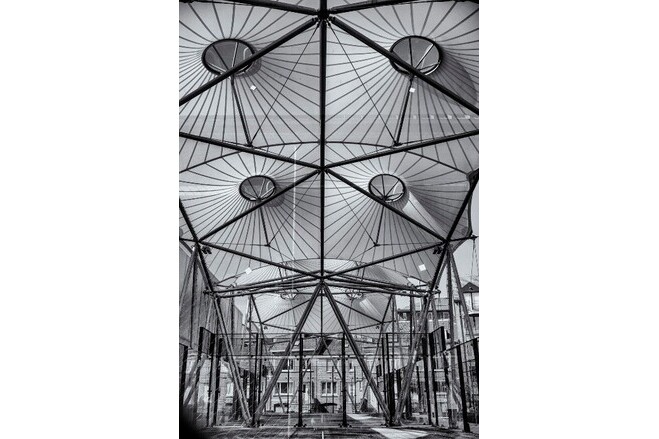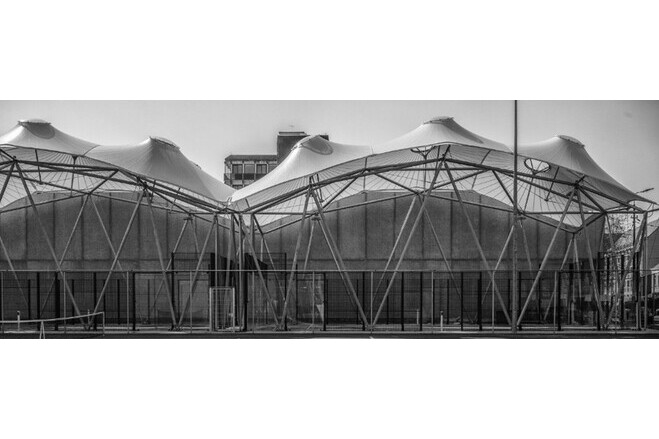Tensile structure covering the Padel Court in Jambes
General information
-
Location address
Jambes
-
Location country
Belgium
-
Year of construction
2021
-
Name of the client/building owner
Fédération Wallonie-Bruxelles - Adeps La Mosane (Namur-Jambes)
-
Function of building
Sport
-
Degree of enclosure
Hybrid structure
-
Climatic zone
Temperate - cold winters and mild summers
-
Number of layers
mono-layer
-
Type of application of the membrane
covering
-
Primary function of the tensile structure
- Rain protection
- Sun protection
Description
During an extensive preparatory phase, architects Ridha Haraket (Fédération Wallonie-Bruxelles) and Amandus VanQuaille meticulously developed and refined the structural concept. The innovative design features a membrane that covers two padel courts, extending approximately 1,5m beyond the courts' dimensions to provide protection from rain.
The analysis model integrates both the metal structure and the tensioned membrane.
The nodes of the metal structure are designed as 3D hinges, allowing the entire structure to function as a freestanding grid shell with triangular meshes. Despite being a 3D grid shell, the structure maintains the appearance of a 'classic' structure with vertical walls and a roof.
The structure, composed of steel bars, cables and membrane, is entirely 'form active'. The membrane is supported by cantilevers at the boundaries and flying masts within the structure.
The stiffness of the membrane structure is achieved by tensioning the cables.
There are only 2 types of 'force' in the structure: compression and tension. As there is no bending, the full cross-section of each member is used to the optimum. The advantage is undoubtedly the significant reduction in weight.
Perhaps the biggest challenge is to integrate the engineering process into the design - these cannot be seen as separate processes because the design of this structure is 'form-active'. Architects are accustomed to design in a 'free' way, by sketching, with the engineer then coming up with solutions to ensure stability and strength. In a form-active structure, the form of the structure together with the prestress define the stability. It takes experience to 'play' with the forms to achieve both stability and an appropriate architectural form.
It is clear that each stage, from the initial concept, through the calculation and optimisation of the form, is of great importance. The general form, the details and workshop drawings, the fabrication, the precision of the elements, including the foundations, all contribute to the quality of the whole system... and finally, the assembly and tensioning are crucial for stability. Each phase must be carefully checked and controlled.
The free height needed for playing padel influenced the structural concept, especially the large angle between the cables supporting the flying masts.
Other side walls - in the language of tensioned membranes - were suggested, but the cheapest solution was chosen.
An annual control for this type of structures is important, as the structural safety depends on the prestress in the structure.
Description of the environmental conditions
General comments, links
nomadconcept.eu/portfolio/padel-jambes-namur/
archello.com/nl/project/padel-court-namur-belgium
Material of the cover
-
Cable-net/Fabric/Hybrid/Foil
Fabric
Main dimensions and form
-
Covered surface (m2)
630
-
Maximum height (m)
12
-
Total length (m)
45
-
Total width (m)
14
Duration of use
-
Temporary or permanent structure
Permanent
Involved companies
Editor
-
Editor
Evi Corne


